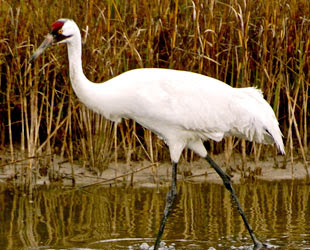100-Acre Mitigation Site at Sanctuary at Costa Grande, D.H. Texas Development
 The Sanctuary at Costa Grande is located on the west side of Matagorda Bay south of State Highway 185 between Seadrift and Port O’Connor, Texas. To take advantage of the coastal landscape and aesthetic appeal of the surrounding environment, proximity to popular outdoor amenities, and growing demand for seaside single family luxury housing, D.H. Texas Development planned to construct a luxury waterfront residential community on the Gulf Intracoastal Waterway. The approximately 900-acre development site was a mosaic of open water, submerged habitat, emergent fresh and salt water wetlands, and upland communities.
The Sanctuary at Costa Grande is located on the west side of Matagorda Bay south of State Highway 185 between Seadrift and Port O’Connor, Texas. To take advantage of the coastal landscape and aesthetic appeal of the surrounding environment, proximity to popular outdoor amenities, and growing demand for seaside single family luxury housing, D.H. Texas Development planned to construct a luxury waterfront residential community on the Gulf Intracoastal Waterway. The approximately 900-acre development site was a mosaic of open water, submerged habitat, emergent fresh and salt water wetlands, and upland communities.
CESI conducted baseline environmental assessments and prepared, coordinated, and secured a United States Army Corps of Engineers Section 404/401 permit to authorize construction and subsequent development of the access canals, marina, and residential development. The project impacted approximately 54 acres of jurisdictional waters of the United States including fresh water wetlands, tidal estuarine wetlands, sea grasses, and open water. In order to provide mitigation for the impacts to waters of the United States, CESI worked closely with resource agencies, including the United States Fish and Wildlife Service, Texas Parks and Wildlife Department, and National Marine Fisheries Service to develop an on-site compensatory mitigation plan.
The comprehensive mitigation plan included the preservation of approximately 113 acres of estuarine wetlands and the construction of a 40-acre freshwater wetland, a 20-acre tidal marsh, and 2 acres of seagrass beds. The preservation areas were placed under a deed restriction so that they would be preserved in perpetuity, prohibiting any further development in these locations. The 40-acre freshwater wetland and 20-acre tidal marsh were excavated from existing upland areas. The elevations for these mitigation sites were constructed to an appropriate grade where the hydrology of freshwater wetlands would be supported by a close connection to the groundwater table and the tidal marsh would receive daily tidal flushing via a tidal channel to the Intracoastal Waterway.
The project site was located in close proximity to the Aransas National Wildlife refuge, which is designated as critical habitat for an endangered bird species, the whooping crane (Grus americana). Whooping cranes are dependent upon healthy coastal ecosystems for foraging and nesting. Following construction and vegetation establishment of the mitigation sites, whooping crane were observed on-site utilizing these areas which is indicative that these sites are providing suitable habitat for these endangered species.
